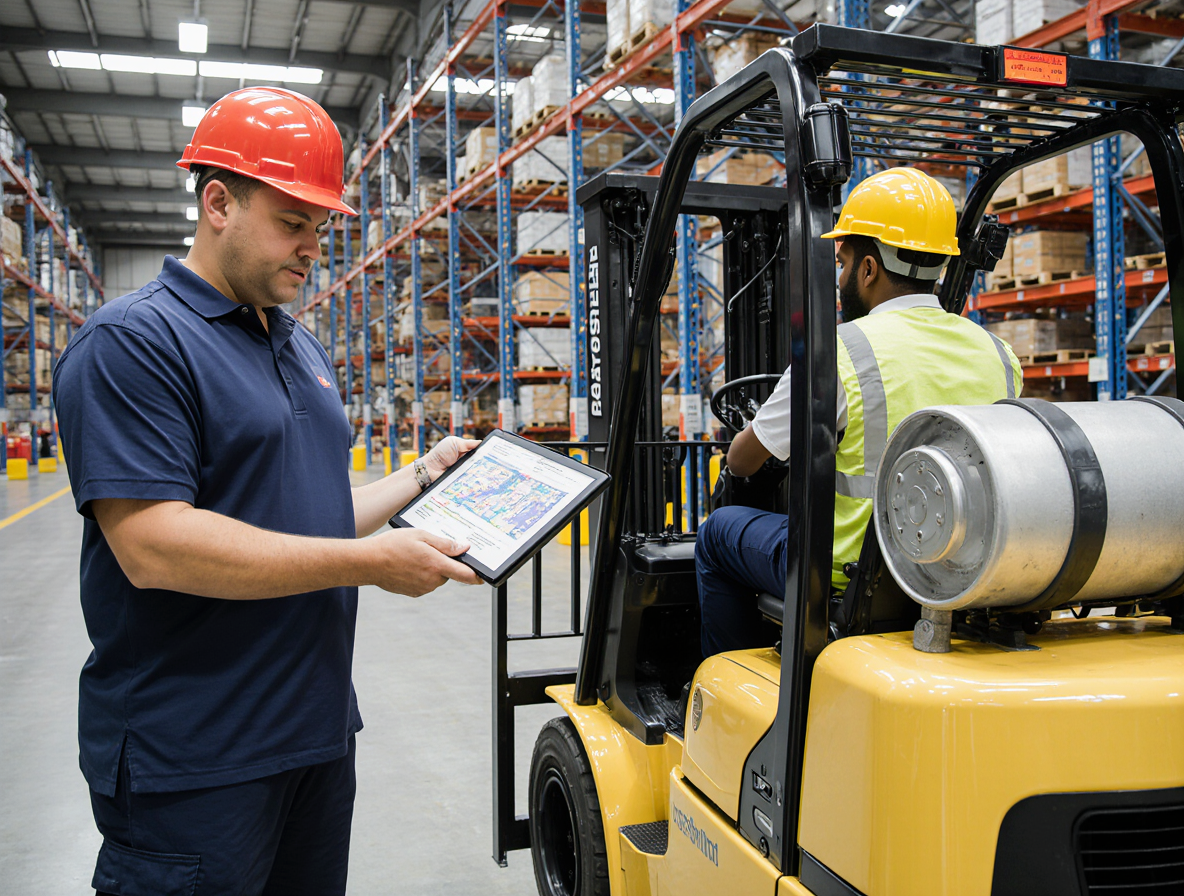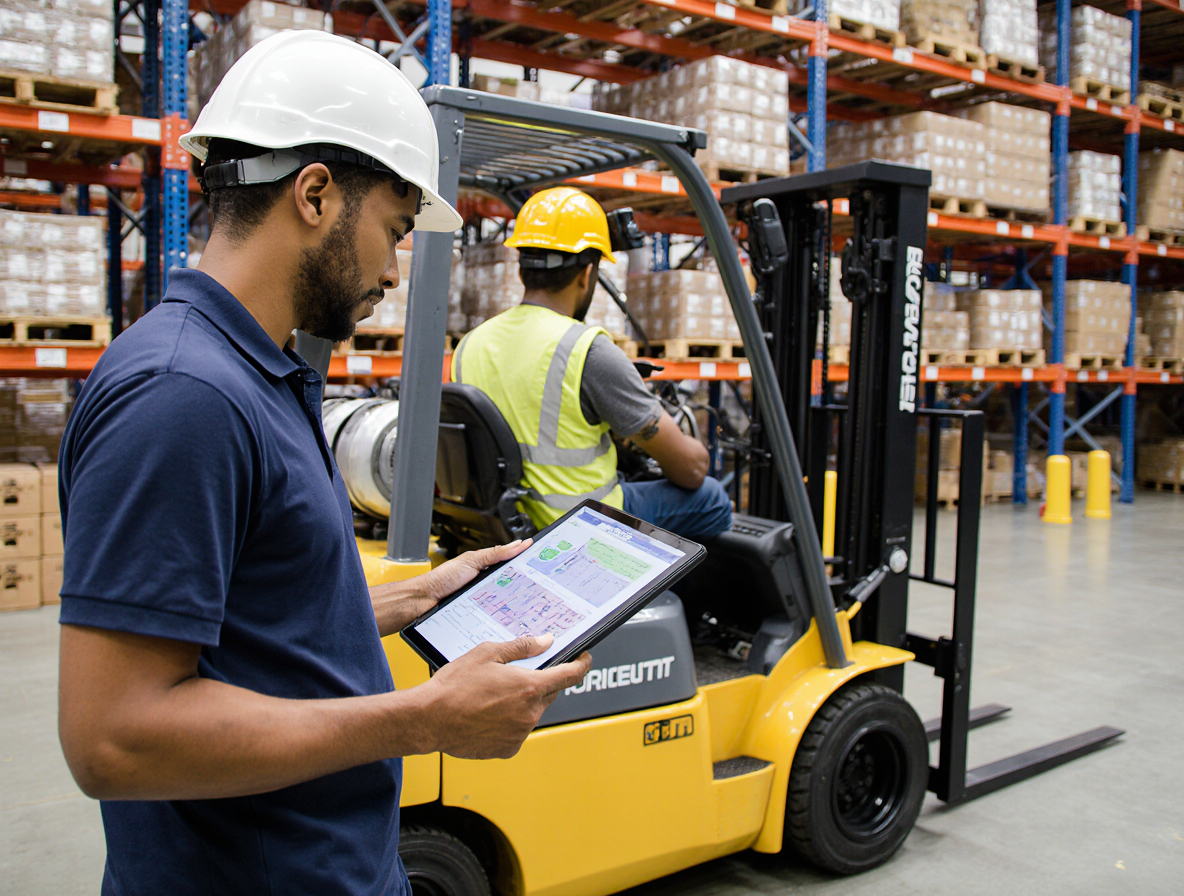

The forklift industry is experiencing a revolutionary transformation as traditional training methods give way to cutting-edge technological solutions. The future of forklift training: trends and innovations represents a paradigm shift that promises to enhance safety, improve efficiency, and create more competent operators than ever before.
With forklift accidents accounting for approximately 85 fatalities annually in the United States alone, according to OSHA data, the urgent need for innovative training approaches has never been more apparent.
Modern warehouses and industrial facilities are evolving rapidly, integrating advanced automation, artificial intelligence, and sophisticated equipment that demands equally sophisticated training methodologies. The future of forklift training encompasses immersive technologies, data-driven learning platforms, and adaptive training systems that address individual learning styles while maintaining rigorous safety standards.
Virtual reality (VR) technology has emerged as a game-changer in forklift operator education, creating risk-free environments where trainees can practice complex maneuvers without the danger of accidents or equipment damage. VR forklift simulators provide realistic scenarios including narrow aisle navigation, load handling challenges, and emergency situations that would be difficult or dangerous to replicate in traditional training settings.
Augmented reality (AR) takes this innovation further by overlaying digital information onto real-world environments. AR-enabled training allows operators to see load weight indicators, stability warnings, and navigation assistance directly in their field of vision. This technology bridges the gap between theoretical knowledge and practical application, enabling trainees to experience realistic scenarios while receiving immediate feedback on their performance.
Leading training providers report that VR-based programs reduce training time by up to 40% while improving retention rates significantly. The immersive nature of these technologies engages multiple senses, creating memorable learning experiences that translate into safer operational practices.
AI-powered training systems represent another crucial component of the future of forklift training: trends and innovations that personalize the learning experience for each operator. These intelligent platforms analyze individual performance data, identifying knowledge gaps and adjusting content delivery accordingly.
Machine learning algorithms track trainee progress across various competencies, from basic operation procedures to advanced safety protocols. The system automatically generates customized learning paths, ensuring that operators receive targeted instruction in areas where they need the most improvement. This data-driven approach maximizes training efficiency while ensuring comprehensive skill development.
Predictive analytics within these platforms can identify operators who may be at higher risk for accidents based on their training performance patterns, enabling proactive intervention and additional support before problems arise in real-world operations.
Gamification strategies are transforming forklift training and scissor lift certification from mundane instruction into engaging, competitive experiences that motivate operators to excel. Modern training programs incorporate elements such as:
• Achievement badges for mastering specific skills
• Leaderboards that encourage healthy competition among trainees
• Progressive challenges that unlock advanced training modules
• Real-time scoring systems that provide immediate performance feedback
These game-like elements tap into natural competitive instincts while making safety education more appealing to younger workforce demographics who have grown up with interactive technologies. Studies show that gamified training programs achieve completion rates up to 90% higher than traditional methods.
The integration of telematics technology and Internet of Things (IoT) sensors provides unprecedented insights into forklift operation and operator performance. Modern forklifts equipped with these technologies continuously collect data on:
• Operator behavior patterns
• Equipment utilization rates
• Maintenance needs
• Safety compliance metrics
• Operational efficiency indicators
This wealth of data enables training programs to be tailored based on actual operational challenges and individual operator weaknesses. Managers can identify specific areas where additional training is needed and track the effectiveness of training interventions through measurable performance improvements.

The future of forklift training embraces microlearning concepts, delivering bite-sized educational modules that operators can complete during brief breaks or downtime. This approach recognizes that adult learners often struggle with lengthy training sessions and benefit from frequent, focused learning opportunities.
• Pre-shift inspection procedures
• Load stability principles
• Hazard recognition techniques
• Emergency response protocols
Mobile-enabled platforms allow operators to access training content anywhere, anytime, supporting continuous skill development rather than one-time certification events. This ongoing education model helps maintain high safety standards while accommodating busy work schedules.
Traditional time-based training models are giving way to competency-based approaches that focus on demonstrable skills rather than hours spent in training. The future of forklift training: trends and innovations emphasizes practical proficiency over theoretical knowledge alone.
Competency-based systems use objective criteria to evaluate operator skills across multiple dimensions including safety awareness, equipment operation, load handling, and workplace navigation. Trainees must demonstrate mastery of each competency before progressing to more advanced modules or receiving certification.
This approach ensures that all certified operators meet consistent performance standards regardless of their learning pace or previous experience. Employers benefit from greater confidence in operator capabilities while workers gain recognition for their actual skills rather than just time served.
As warehouses increasingly adopt autonomous and semi-autonomous material handling systems, forklift training must evolve to prepare operators for human-robot collaboration scenarios. Training programs now include modules on:
• Supervising autonomous forklift operations
• Intervening safely when automated systems encounter problems
• Coordinating workflows between human operators and robotic systems
• Understanding the limitations and capabilities of automated equipment
This training ensures that human operators can work effectively alongside emerging technologies while maintaining ultimate responsibility for safety and productivity outcomes.
Regulatory bodies are beginning to recognize and adapt to technological innovations in forklift training. While maintaining core safety requirements, agencies are becoming more flexible about training delivery methods and assessment techniques.
The future regulatory landscape will likely embrace technology-enhanced training while establishing new standards for virtual and augmented reality training programs. Compliance frameworks are evolving to accommodate continuous learning models rather than traditional periodic recertification approaches.
Organizations must stay current with these regulatory changes while implementing innovative training technologies to ensure both compliance and competitive advantage.
The future of forklift training: trends and innovations represents more than technological advancement—it embodies a fundamental shift toward more effective, engaging, and personalized safety education. Organizations that embrace these innovations will benefit from reduced accident rates, improved operational efficiency, and more confident, competent operators.
Success in implementing these advanced training approaches requires commitment to ongoing investment in technology and trainer development. Companies should evaluate their current training programs against these emerging trends and develop implementation strategies that align with their operational needs and workforce demographics.
The transformation is already underway, and organizations that delay adoption risk falling behind in safety performance and workforce development. Contact our training specialists today to explore how these innovative approaches can revolutionize your forklift safety program and position your organization for future success.